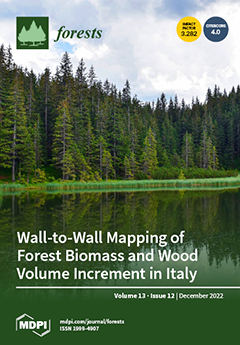Previous research on the relationship between edaphic factors and species diversity patterns has mostly focused on topsoil between 0 and 30 cm, with less attention paid to deeper layers where many plant root systems are concentrated. Since considering deeper edaphic layers might help to unravel the maintenance mechanisms of plant diversity, in the present study we explored the relationship between vegetation
β-diversity and a comprehensive set of soil chemical attributes at different depths. Based on vegetation and soil data from subtropical broad-leaved forest plots in the Nanling Mountains, China, we analyzed the driving factors of
β-diversity patterns of trees, shrubs, and herbs using multi-site generalized dissimilarity modeling (MS-GDM). We found that the species composition dissimilarity of trees, shrubs, and herbs layers in the study area was highly diversified and dominated by species turnover components. Topsoil chemical properties were the best explainers for the
β-diversity of trees (52.5%), followed by herbs (40.3%) and shrubs (21.8%). With the increase of soil depth, especially for depth >60 cm, soil chemical elements gradually lost explanatory power. Regarding the
β-diversity of trees, it was mainly affected by altitude and available nitrogen (AN), total iron (Fe), and nickel (Ni) content in the soil of 0–60 cm depth. Concerning shrubs, the best
β-diversity explainers were altitude, geographical distance, and nutrient elements of the soil above 40 cm. The main factors driving the
β-diversity of herbs were altitude, total boron (B), total cadmium (Cd), and total nickel (Ni) of 0–40 cm soil. Overall, our results suggest that the environmental filtration process driven by altitude and soil factors, and dispersal limitations represented by geographical distance, affected the
β-diversity patterns of Nanling forest communities.
Full article





